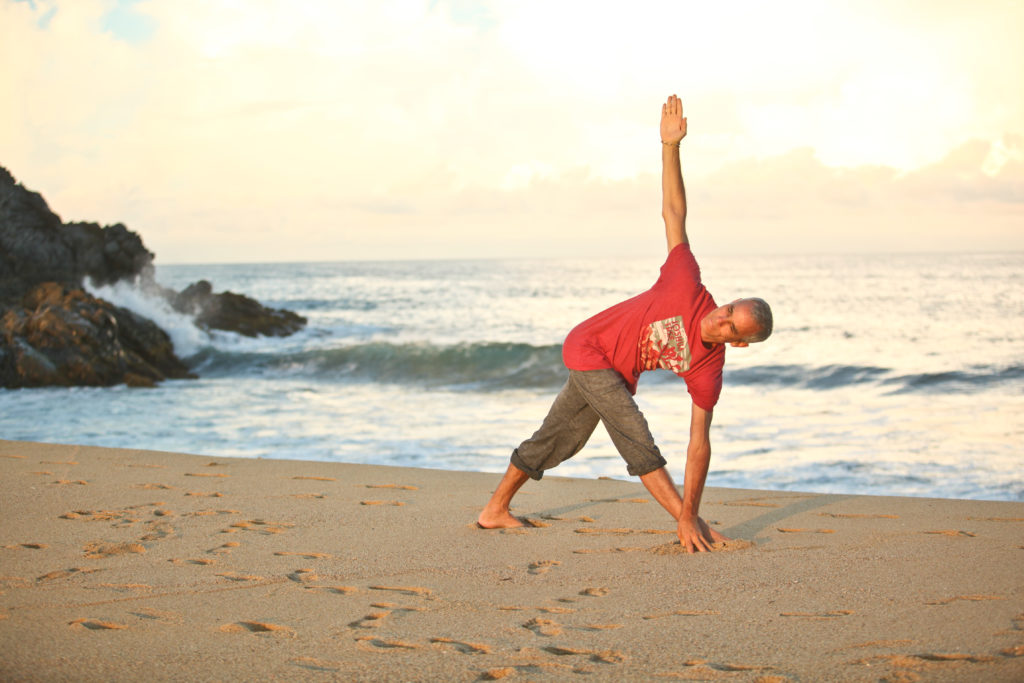I come from a background of severe drug addiction (alcohol, marijuana, cocaine, freebase, heroin) and now have over 31 years of continuous recovery.
I tell people that my story is really a story of recovery within recovery. I first got sober and began a “one day at a time” approach to abstinence from drugs and alcohol. I worked with a sponsor to go through the 12 Steps and my life got significantly better.
Yet I would spend the next 10 years of my recovery still mired in addictive thinking and addictive behaviors such as gambling, smoking cigarettes, and codependent relationships.
So much was improved, but there was a long way to go before I was truly out of the woods. It came in stages.
In the first stage, I knew I needed to get sober, but had no idea how to nor did I necessarily want to. In the second stage, I had developed some concept of how to go about being sober, but still was not sure that this life was for me. This was a very slippery phase during which I was mostly thinking, “there has to be some other way.”
Then something rather amazing took place. I had a series of nightmares in which I used drugs and felt tremendous remorse and shame. When these horrible dreams finally stopped, after months, I realized I actually wanted to be sober, that it had become important to me.
This was stage three. I knew I wanted to be sober, but now I was concerned about whether I could sustain it long-term. There is fear in this stage and many people get stuck here. All this time I had been kicking and screaming, but now I finally wanted to hold on to my sobriety, no matter what.
Day by day, I continued to do the work and show up. Eventually, I woke up one day to the realization that I could not remember the last time I thought about using drugs or alcohol. I no longer desired to use, nor did I have any charge around it. You might say I had become disinterested in drugs and alcohol. I was free. In my opinion, this is the hopeful result that people refer to as the miracle of the 12 Steps.
My decades-long relationship with yoga began the year I got sober for the final time in June of 1991. Yoga is a part of the reason that I was able to realize all that the 12 Steps have to offer and I strongly believe that yoga is indispensable in the treatment of addiction.
Here are some of my ideas as to why.
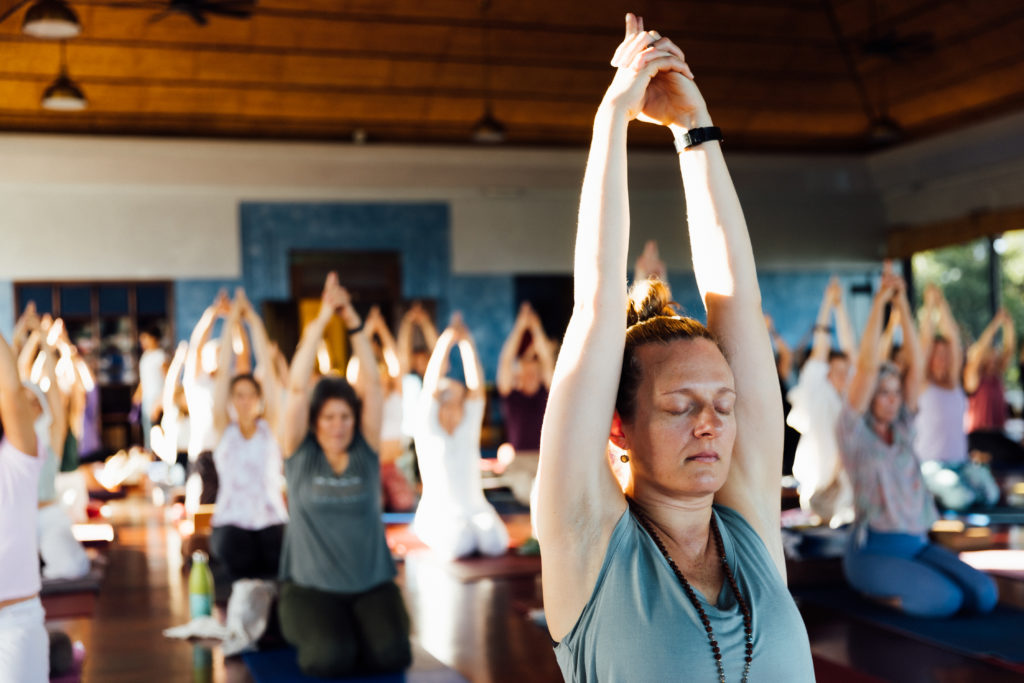
Addiction Is Dis-Ease. Yoga Brings Ease.
Addiction is a state of mind and body where we feel distant from ease.
Ask anyone who struggles with addiction if they feel “at ease” when they are not using their drug or addictive behavior of choice and they will tell you, “no”.
It is precisely this lack of ease that compels a person to reach for something to try to feel better (move them closer to ease). It makes sense that any practice that is productive rather than destructive and can bring ease to the body-mind system will be a key ingredient on the path of recovery from addiction.
The physical practice of yoga, along with breath practices, serves to detoxify the body and to calm the mind. Yoga improves circulation and lung capacity, stretches and strengthens muscles, helps to improve digestion, and regulates the nervous and endocrine systems.
You will simply be more comfortable in your mind and body if you practice yoga.
Addiction Causes a Sense of Lack. Yoga Brings Wholeness.
We know that people who struggle with addiction carry a deep sense of lack. Something seems to be missing; an itch needs to be scratched.
With acute addiction, one’s entire organism is caught up in a pursuit to fulfill needs that can never be met. This is true for active addicts as much as it is true for people in recovery, until they have been able to work out the complex roots of trauma that drives their behavior.
The way that we breathe directly affects our emotional state and vice versa. When we feel anxious, worried, angry or stressed our breath becomes shallow. Interestingly, shallow breathing sends a signal to our nervous system that our core need is not being met. This reinforces a sense of lack, which creates tension and stress. For addicts in particular this is dangerous because it keeps us stuck in a somatic pattern that reinforces the illusion that we are somehow incomplete. It keeps us stuck in the frequency of addiction.
Many people do not breathe well, meaning they have not developed the capacity to breathe deeply, to work their diaphragm and lungs. They also have not developed their core musculature, which is necessary for proper posture, to support the heart and to allow the rib cage to expand and contract when breathing deeply.
Vinyasa yoga is the primary form of yoga practiced in the United States today. Vinyasa simply means movement coordinated with breath, but all yoga emphasizes a focus on breathing.
Through dedicated, and sometimes strenuous, practice we develop a relationship with our breath. We come to understand that by focusing on and controlling our breath we can change how we think and feel. We can use the breath as a vehicle for entering states of meditation and also as a means of changing our emotional state and managing stress.
By learning to do simple long deep breathing, which is accessible by almost anyone, we send a different message to our nervous system, namely that all is well, and our core need is being met. This allows our body-mind system to relax and moves us toward healing, recovery, and wholeness.
Breathing well counters the sense of lack that plagues most addicts and is a precursor to a healthier life beyond addiction. I love the wonderful quote from Mary Oliver who asks, “Are you breathing just a little and calling it a life?”
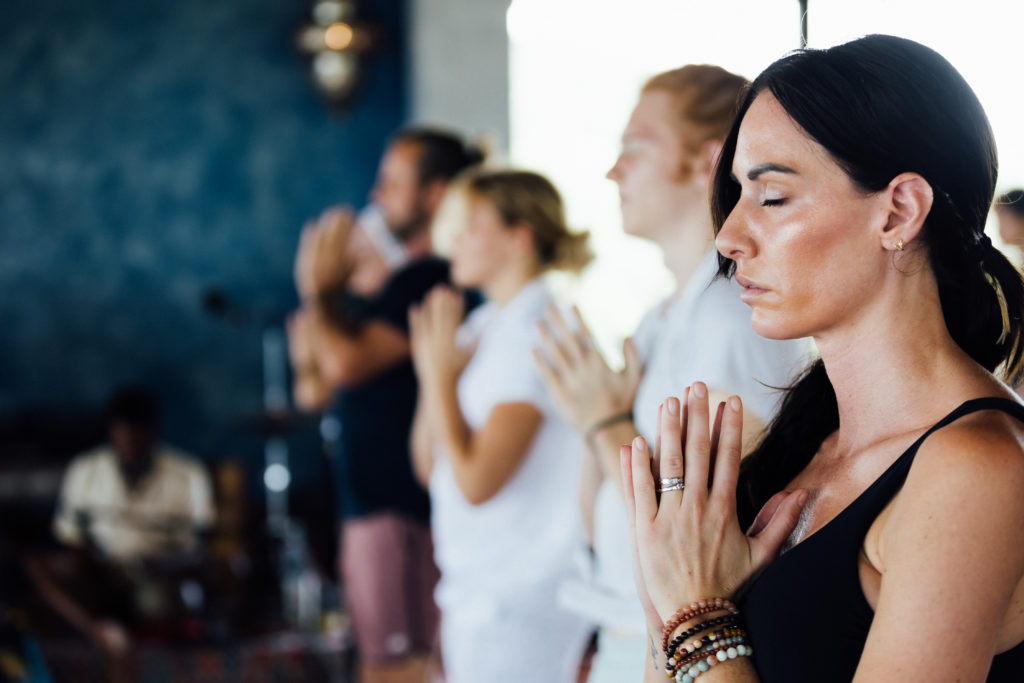
Addiction is a Disease of Disconnection. Yoga is Union.
The word Yoga means “union”. It refers to the union of mind, body and spirit.
Wherever a yoga teacher directs my attention, I learn to connect with that area of my body. In this way, yoga is the practice of connecting or re-connecting with my body.
In active addiction, we have lost connection with our body. Addiction surpasses even our body’s main directive to survive. By engaging in a yoga practice we direct our mind back into contact with our physical self and move toward a sense of union that is uplifting to our spirit.
From the yogi’s perspective, all addiction comes from the misunderstanding that we are somehow separate from each other and from all of creation. The path of yoga liberates us from this illusion. Thus, while helpful to any Human Being, yoga is of particular use to addicts who live in abject confusion and disconnection most of the time.
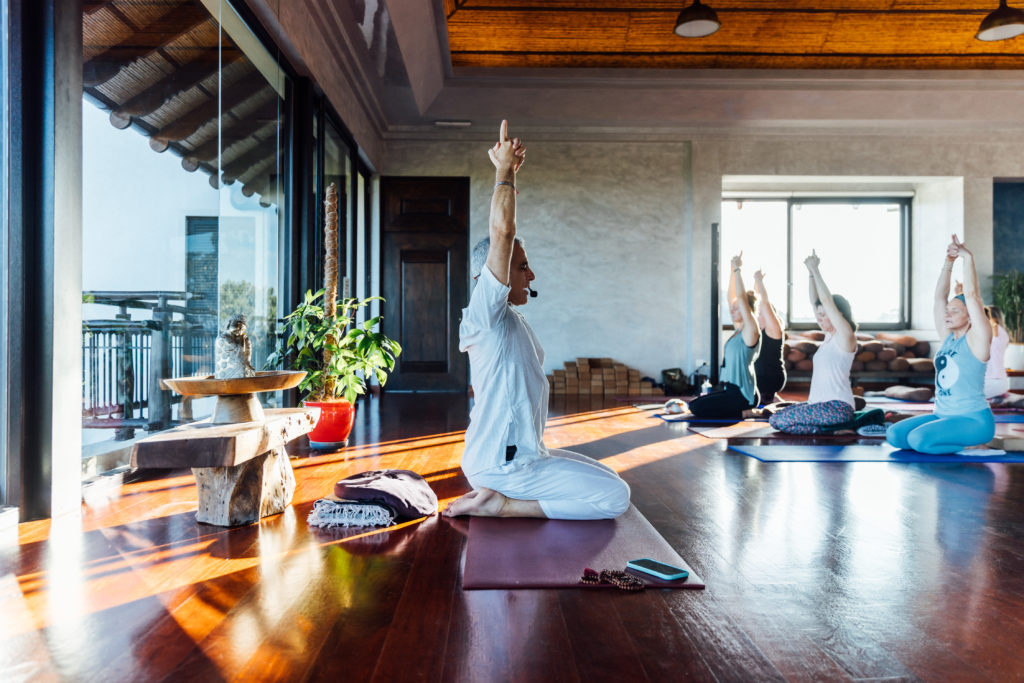
Yoga Helps Process Trauma
You may have heard the saying, “the issues are in our tissues”. Addiction has its roots in trauma, which I define as any event that leaves undigested or unprocessed negative emotional energy stuck in the mind-body system.
These stuck energies have to be processed out of the system or they fester. Someone who has endured a lot of trauma and carries its residue shows the evidence of it written into their bones, skin, posture, and the way they breathe and move.
At 12 years sober, all the trauma of my life, much of it self-inflicted, caught up with me and manifested in severe, chronic back pain. After a year of trying every alternative healing therapy you can imagine, I visited the good folks at Cedars-Sinai hospital, had an MRI and received their diagnosis and prognosis. I had severe degenerative disk disease and two herniated discs at L3-L4 and L4-L5. The radiologist and surgeon who reviewed the MRI told me they would have to manage my pain with drugs for the rest of my life and eventually we would have to look to surgery.
While I had been sober all that time from drugs and alcohol, I was still stuck in the dis-ease of addiction. I had not yet learned that in order to truly free myself from my past, I was going to have to go deeper into the tissues of my body and release the energies that were stuck there.
The 12 Steps, along with cognitive and behavioral therapies, were very helpful, but I needed something more. Through a very strange set of events, I ended up at the office of a man named Guruprem who would become my life teacher. He was a Kundalini yoga teacher, and it was through these powerful teachings and practices that I found precisely what I was looking for.
Kundalini Yoga, among its many other benefits, helps to detoxify and rebuild the systems of the body. It gets very deep and can move energy unlike any other thing I have experienced. Each week, I would meet and practice with Guruprem at his office and he would teach me the techniques I needed to move out of the emotional and physical stuck-ness I had been feeling. In about 90 days after we started our sessions, my back pain went away and I have never looked back. No drugs. No surgery.
Yoga Calms Fluctuations of the Mind
Anyone who has experienced addiction can relate to the idea that when caught in its grasp, one feels preyed upon by one’s own mind. Through every conceivable thought-form, addiction makes itself known.
Often our minds are at us even before we get out of bed in the morning. We haven’t yet opened our eyes and the vulture is already right there on the headboard.
Indeed, addiction causes a powerfully negative form of mind fluctuation or disturbance. In the Yoga Sutras of Patanjali, a classic text that describes the path of yoga, there are 296 sutras that illuminate an individual’s journey from suffering to liberation. In the second sutra, Yoga is defined as “the calming of the fluctuations of the mind”.
This path can be summarized as follows: Aspire to live a disciplined, ethical life. Bring the body into alignment and health. Learn the secrets of the breath. Meditate and be free.
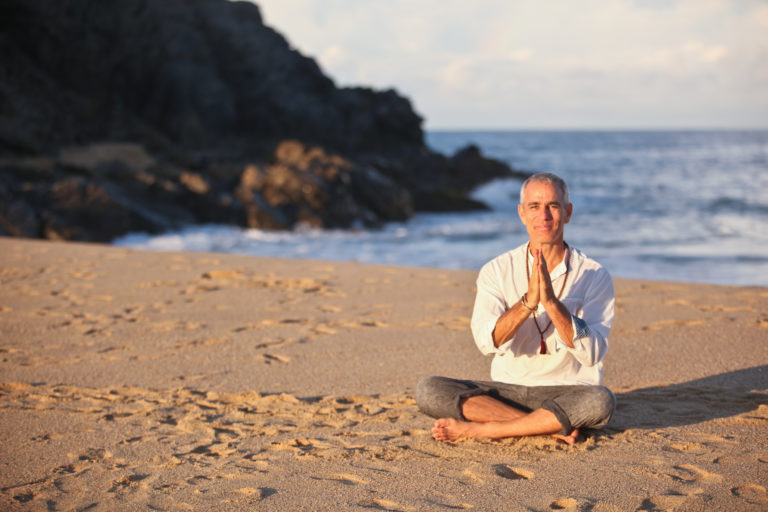
Practicing Yoga Makes You Naturally High
I champion the idea that there is nothing wrong with wanting to “get high”. The problem is that in addiction our methods are destructive.
I encourage anyone in recovery to seek out natural highs, and you don’t have to look any further than your yoga mat.
I’ll never forget my first experience of a 90-minute Vinyasa yoga class. It was very challenging, but I loved it. At the end of class, the teacher directed us to lie down, relax completely, and let the full weight of our body rest upon the earth. This was savasana or corpse pose.
The feeling was electric — energy humming through my body. I felt like blood was pouring into areas of my tissues that it had not been able to reach for some time. It was relieving and healing. It was subtler than the feeling from getting high on drugs, but it was detectable and lovely, and there would be no hangover, just a feeling of more ease than I could remember. Far from the darkness of the insanity of addiction, this was pure light and a way through.
I cannot stress enough what it meant to experience that in my early recovery and to realize I could feel that feeling without any negative side effects. It was a revelation and it has served me ever since.
While I do not consider yoga to be a replacement for a program of recovery such as the 12 Steps, I have found it to be a critical part in a person’s overall approach to treating addiction.
In my work over the years with thousands of people in recovery, things tend to go better when yoga is a part of someone’s recovery. The path of yoga is complementary to the path of recovery from addiction. In my experience, it decreases the likelihood of relapse and increases one’s enjoyment of life. And after all, the point is not to just survive addiction. The point is to thrive in recovery.

